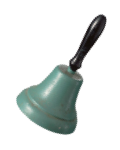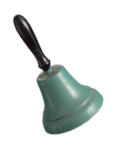A traditional medical hall often has over 600 herbs in the cabinets which can be used in different combinations to produce thousands of different herbal concoctions. Each cabinet has 4 to 6 sub-compartments and herbs are usually grouped together based on edibility, fragrance and efficiency. This intricate organisation system reflects the age-old wisdom of planning ahead.
It takes years of knowledge in the field to be able to identify each herb based on its shape, smell and color and understand its unique purposes. Behind each herbal combination is the detailed measurement of different herbs, which requires experience, practice and expertise.
With a wealth of knowledge and proficiency about herbs, traditional medical halls can confidently provide herbal concoctions based on prescriptions by TCM practitioners. Based on one’s competency, one can even alter the herbal concoction according to the customer’s preferences in terms of taste and fragrance, simply by adjusting the proportions of each herb in the herbal combination.
A common herb in TCM halls is that of ginseng which is known for tonifying qi (‘life force’ or ‘vital energy’ in Mandarin and a fundamental concept in TCM), strengthening the spleen and nourishing yin (‘cold’ in Mandarin and another fundamental concept in TCM). This TCM hall is no exception in displaying ginseng on their shelf. If you have an eye for detail, you may notice that there are many equally valuable herbal cordyceps within the same bottle, displayed on the shelf of Heng Foh Tong Medical Hall.
Instead of an ordinary cylindrical glass display, this antique lantern shaped glass display is uniquely designed and manufactured in Singapore. The contours of the glass vessel have been accentuated with led LED lighting, spotlighting the beauty of the glass.
The glass displays can be considered ‘limited edition’ as the glass manufacturer who produced these hasd retired in the 1980s. Currently, only a handful of Traditional Chinese Medical TCM halls uses these glass displays.
For smaller-sized and more valuable herbs such as pearls used in beauty treatments, smaller-sized glass bottles are used. The back of these bottles have hand-written Chinese characters labelling their contents and were written by the founders back in the 1950s.
TCM practitioners often prescribe herbal concoctions using the tael dosage measurement. Even in this modern world, tael units are still used to measure the weight of gold and herbs, with one tael being approximately 38g.
The process of dispensing herbs is also known as zhua yao (抓药” in Mandarin) which means “grabbing medicine”. A seasoned herbal dispenser can even accurately ‘grab’ the herbs without measurement based on years of practice.
Another common object that can be found in TCM halls is the pestle and mortar used to grind herbs. Here at Heng Foh Tong, the same pestle and mortar have been in use since 1957 and despite its well-worn appearance, it continues to serve its owners well. Reflecting on this humble object, one can’t help but read the bandage (used to hold the pestle’s metal head to its handle) as an example of the thriftiness of the trade, and the indent (formed over many years of bpounding herbs) on what was once a solid wooden base of the mortar as a reflection of the hard work underpinning this trade.
Many TCM halls will also have an altar and at the . Heng Foh Tong Medical Hall, is no exception and the three deities the owners pray to daily are the Goddess of Mercy - Guan Yin (“ 观音菩萨” in Mandarin ); the God for Business Wealth - Guan Gong (“关公” in Mandarin); and the God of Health – Bao Sheng Da Di (“保身大帝” in Mandarin).
Daily prayers are a common practices of the trade as a reminder that kindness, compassion and competency are s treasured traits of practitioners in this business.
As early as the 1950s, concepts of marketing and branding were already established in – including a Heng Foh Tong medical hall’s business. It hads its own “logo” which is imprinted onto the pink wrapping paper used to wrap herbs in. The medical hall even has 2 different sizes of chops to cater to the various sizes of the paper. This practice has been passed down from 1957 and continues today.
An abacus can be considered the ancient predecessor of the basic calculators we see today. The daily clatter of the abacus's beads hitting each other while being slid briskly within a tight frame has remained consistent since 1957. This is the traditional way for calculating the total cost of herbal concoction based on tael measurement. Arguably, it is easier and more instinctive compared to a calculator and definitely faster than a cash register in the hands of the Heng Foh Tong medical hall owners!
These days, there are machines which can be used to cut herbs using a big sharp blade housed within. The machine has different hole sizes to fit the variety of herbs and cut them into thin slices. The unique sounds produced when it warms up, followed by the loud slicing sounds of the herbs being cut, contributes to the unique auditory experience of a TCM medical hall!
The next time you’re in a TCM hall, see if you can spot any of these objects and perhaps you will view the interesting landscape of a TCM hall in a new light!


